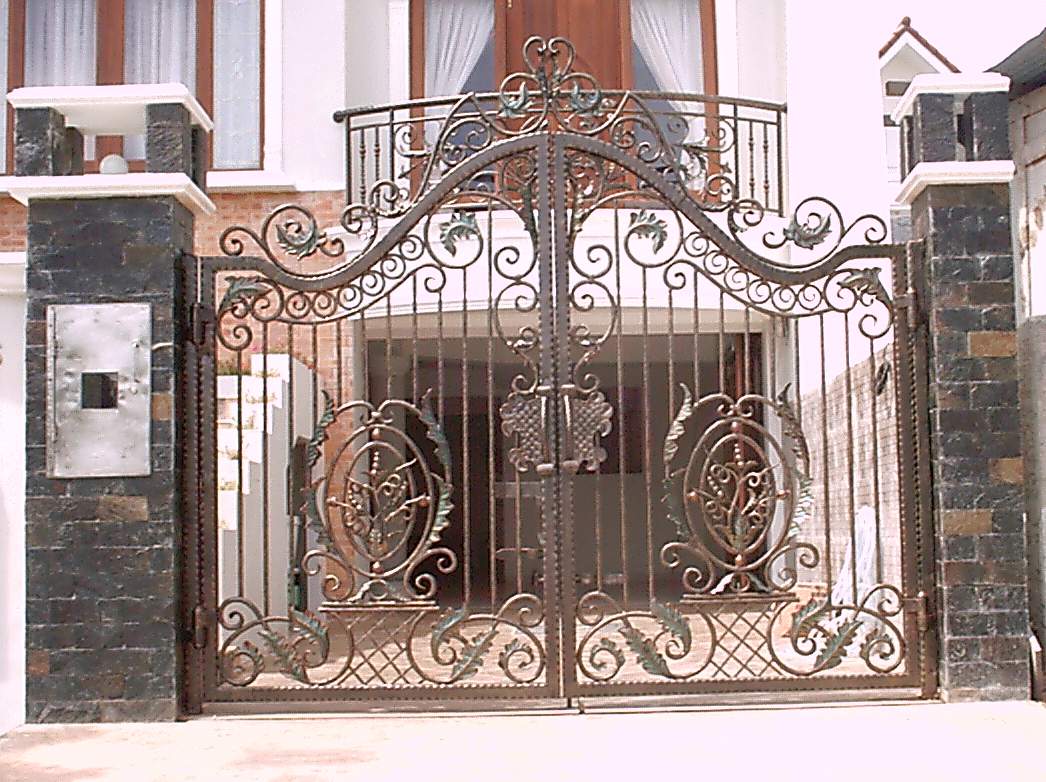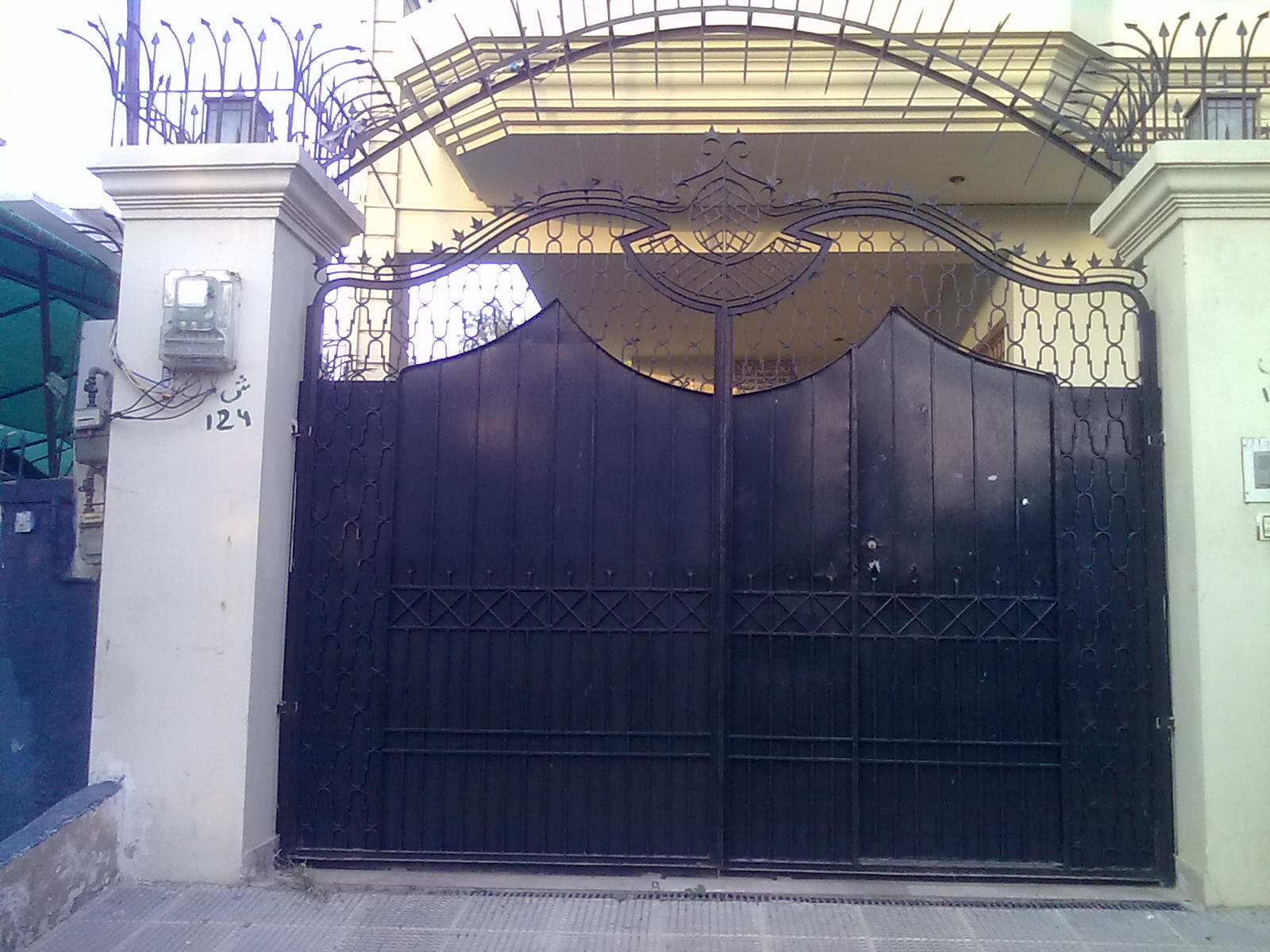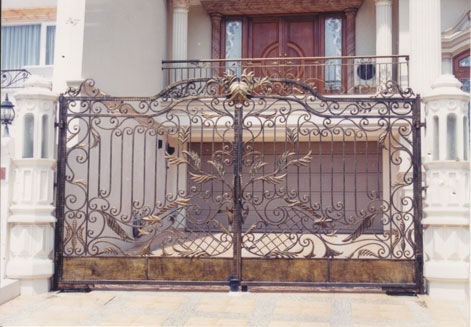
A gate does more than just open or close a gap in a fence. It can also serve as a focal point, punctuate an entry, or highlight a special area.
First Impressions
Gates create an image and project an impression about what lies beyond. A tall locked gate does not invite entrance. Low, painted pickets, on the other hand, are more welcoming. Gates can be strictly utilitarian, architectural, or whimsical.
Although a gate may be the last element you build in the fence, think about it early in the planning. You should decide at least three things about the gate or gates before you finalize your fence line: location, size, and direction of swing.
Common sense will help decide the gate’s location. It should be convenient to natural traffic paths. Determine the size of the gate by what will pass through it (see “Guidelines for Gate Openings” on the opposite page). Direction of swing depends on where you place the gate.
Then keep your overall fence style— and the following pointers—in mind as you begin to make decisions about the appearance of your gate.
Function And Materials
A main entry gate deserves more prominence than one leading into a service yard. Materials and how you combine them are important factors in achieving the look you want.
A gate that contrasts with the fence in style or material becomes a focal
point. To downplay a gate, design it to match the fence. Making the gate less noticeable often enhances the feeling of privacy. Special effects—such as distinguishing trim—invite attention to a gate without detracting from the continuity of the fence line. An arbor or canopy can further set off an entry.
A GATE AS A STRUCTURAL SYSTEM
Gates, like fences, form a structural system. Regardless of style, each gate is basically a frame with infill. Bracing is frequently an essential part of gate design. A diagonal brace can transfer some load from the top of the gate to the frame side and post. The strength of a gate depends on its structural design as well as the quality of its materials and construction.
Gates place a heavy load on their posts. Gateposts are typically larger and are set deeper than other fence posts to support the load.
Join the parts of the system with hardware of the appropriate size that matches the style of the fence. Latches, catches, hinges, and other accessories provide more than their mechanical functions. They are also part of the aesthetics of a gate.
A pergola over a pair of arch-top gates creates a dignified portal while the rustic gate (inset) makes a far less formal entry. You can design a gate to fit your home, fence, landscape, and personal style.
Designing The Gate
A gate must swing open and shut smoothly and look good for many years. For a gate to do its job well, these three elements must work together:
Structure: It takes sound framing and bracing, solid joints, and properly installed infill to make a durable gate. A gate that’s too wide will probably sag, and an overly heavy one can put an unnecessary—often damaging—burden on the hardware.
Hardware: Rustproof fasteners— stainless-steel screws are best—plus stout hinges, latches, catches, and locks are essential to ensure a gate’s utility, appearance, and durability. Buy hardware, especially hinges, adequate for the size and weight of your gate. Attach hardware securely with screws.
Gateposts: Gateposts must be set sufficiently deep in stable footings to transfer the load of the gate to the ground.
Because gateposts must support the weight of the gate and withstand the forces of opening and closing, they are often one size larger than the intermediate fence posts.
As you design your gate, you can leave decisions on style, infill, and other details until last. Plan the structure first, then add the infill later to achieve the right look. Begin with this question: How wide should the gate be?
Opening Width
If a gate is too wide, it will soon sag and hang out of square because of its own weight. Tradition says that 4 feet is about the limit for a commonly hinged, one-panel, unsupported gate.
If the fence opening must be wider than 4 feet, you can span the opening with a pair of gates or a single gate with extra support—a wheel at the corner or a diagonal turnbuckle. (See “Guidelines for Gate Openings,” below.)
The Swing Of The Gate
To determine which way your gate should swing, look at its surroundings. The illustrations in this section show how the conditions at the location of the gate affect the direction it can swing. Your gate may be able to swing open in both directions. If so, you can purchase special hinges and latches.
Here are some of the more common gate locations and how they affect the swing of the gate: Boundary line fences: Gates installed along the edge of a property are usually mounted so they swing into the property rather than out across a public sidewalk or into an adjoining property. In fences that differentiate one part of a property from another, don’t rule out hinging a gate to swing both ways, especially if the gate will be in a high-traffic area, such as the walkway especially if the gate will be in a high-traffic area, such as the walkway leading to a detached garage. A double-swinging gate will save time and trouble when your arms are full of groceries.
Where fences meet: A gate here should be hinged on the side of the section that’s nearest the corner of the fence so the swinging gate won’t get in the way of views and access through the opening. A two-way gate lends itself well to this kind of opening.
Top or bottom of stairs: If the landing is wider than the arc of the gate’s swing, you can safely mount a gate at the top or bottom of a flight of stairs. People need enough space to step back to swing the gate, and the landing forewarns that steps exist beyond. In this situation, the gate can swing in one or both directions.
Along a slope: If you’re building a gate on a slope, hinge it on the low side so that as the gate swings open, the bottom will clear the slope. Note that the frame is built square, rather than conforming to the angle of the slope. It breaks the visual line of the fence framework, but the gate gets the structural strength it needs. In this situation the gate can swing in one or both directions.
Across a hillside: Hills, like slopes, require gates to be hung so they will swing out toward the downhill direction; the bottom of the gate will swing free and clear of the slope of the hillside. Gates hung perpendicular to a hill can swing in one direction only.
GUIDELINES FOR GATE OPENINGS
An opening 3 feet wide allows one person and a large piece of equipment to pass through comfortably. A 4-foot opening provides more comfort, and a 6-foot opening will allow several people to pass through at once. Vehicle openings should be 10 to 12 feet wide. Drive stakes into the ground at different wds to assess ease of access. Allow 1/2- to 1/3-inch clearance between the gate and post on the latch side, 1/2 to 1/4 inch on the hinge side.




.jpg)













